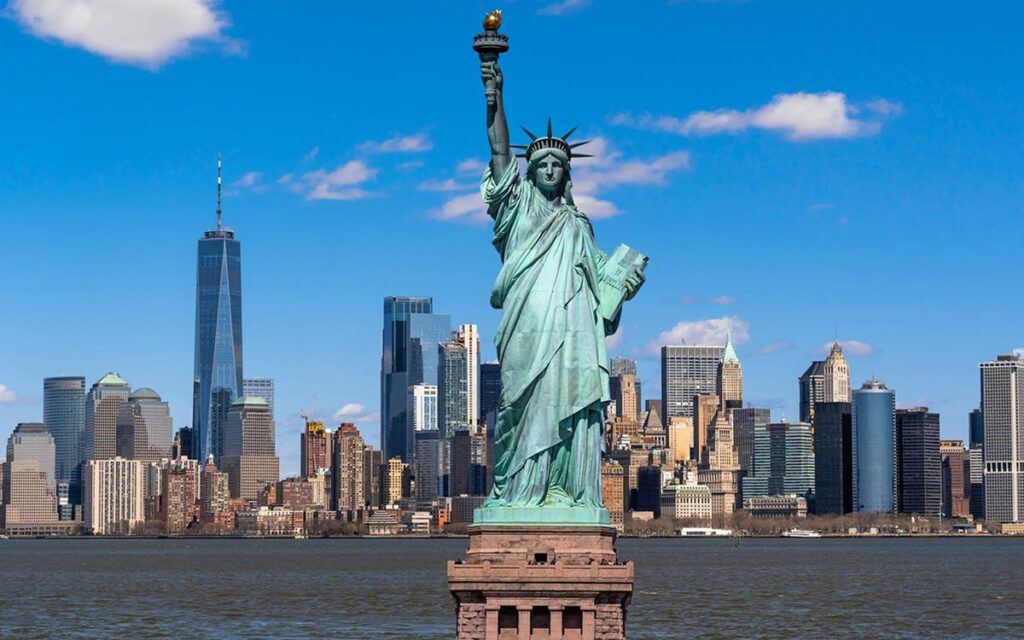Study in United States of America

The United States of America
- Functionality: Design in the USA emphasizes practicality and usability to ensure products and spaces serve their intended purposes effectively.
- Innovation: American design fosters creativity and encourages new ideas, pushing boundaries and challenging conventional norms.
- Sustainability: Environmental consciousness is a key principle, promoting eco-friendly materials, energy efficiency, and responsible manufacturing processes.
- Diversity: American design embraces cultural and social diversity, celebrating different perspectives and incorporating inclusive elements.
- Aesthetics: USA design values visual appeal, balancing form and function to create visually pleasing products and spaces.
- Accessibility: Design in the USA strives to be accessible to all individuals, considering universal design principles and addressing diverse needs.
Studying in the USA offers a diverse range of academic opportunities and a multicultural experience. Renowned for its prestigious universities and innovative research programs, the USA provides a conducive environment for intellectual growth and skill development. With its world-class faculty, state-of-the-art facilities, and vibrant campus life, pursuing higher education in the USA can broaden horizons and open doors to promising career paths. Whether it's engineering, business, humanities, or the arts, the USA offers a multitude of study options to suit various interests and aspirations. Embrace the chance to engage with a global community, gain a competitive edge, and foster personal growth by choosing to study in the USA.
- Quality education: The USA is renowned for its world-class universities and academic institutions.
- Diverse academic programs: Students have a wide range of options to choose from, including various majors and specializations.
- Research opportunities: The USA offers abundant research opportunities, allowing students to engage in cutting-edge studies and projects.
- Cultural diversity: Studying in the USA exposes students to a multicultural environment, fostering global awareness and cross-cultural understanding.
- Networking and connections: The country provides a platform for students to build valuable connections with professionals and experts in their field.
Engineering:
Programs in various engineering disciplines like mechanical, civil, electrical, and computer engineering are popular choices among students. Prominent engineering schools include Massachusetts Institute of Technology (MIT), Stanford University, California Institute of Technology (Caltech), and Georgia Institute of Technology.
Business Administration:
Many students pursue programs in business administration, such as Bachelor of Business Administration (BBA) or Master of Business Administration (MBA). Top business schools in the U.S. include Harvard Business School, Stanford Graduate School of Business, Wharton School at the University of Pennsylvania, and Kellogg School of Management at Northwestern University.
Computer Science:
With the growing demand for technology professionals, computer science programs have gained popularity. Renowned institutions in this field include Massachusetts Institute of Technology (MIT), Stanford University, Carnegie Mellon University, and University of California, Berkeley.
Medicine:
Programs in medicine, including Doctor of Medicine (MD) and various medical specialties, attract numerous students. Notable medical schools in the U.S. include Harvard Medical School, Johns Hopkins School of Medicine, Stanford University School of Medicine, and University of California, San Francisco School of Medicine.
Psychology:
The study of human behavior and the mind is a popular choice among students. Prominent psychology programs can be found at Stanford University, Harvard University, University of California, Berkeley, and University of Pennsylvania.
Political Science:
International Relations: Programs related to political science, international relations, and public policy are popular among students interested in government and global affairs. Noteworthy institutions in this field include Harvard University, Princeton University, Georgetown University, and Columbia University.
Fine Arts:
Various programs in fine arts, such as visual arts, performing arts, and music, attract students passionate about creative expression. Notable institutions include Rhode Island School of Design (RISD), Juilliard School, School of the Art Institute of Chicago, and Berklee College of Music.
To reach the USA for studies, follow these steps. First, research universities or colleges that match your academic goals. Check their admission requirements and deadlines. Next, prepare necessary documents such as transcripts, test scores, and letters of recommendation. Apply online or through mail, paying attention to specific application guidelines. Once accepted, apply for a student visa (F-1) at the nearest US embassy or consulate. Provide required documents like the I-20 form, proof of financial support, and a valid passport. Attend the visa interview and pay the necessary fees. Finally, book your flights, arrange accommodation, and plan for a smooth transition to the USA.
Cost of Studying in the USA
The cost of studying in the USA can vary depending on several factors such as the type of institution (public or private), the location, the program of study, and the duration of the program. Additionally, costs can differ significantly for international students compared to domestic students. While I don’t have access to the latest data beyond my knowledge cutoff in September 2021, I can provide you with a general overview of the costs involved. Please note that these figures are approximate and may vary.
Tuition Fees:
- Public Institutions (in-state students): $10,000 – $25,000 per year
- Public Institutions (out-of-state/international students): $20,000 – $40,000 per year
- Private Institutions: $25,000 – $50,000 per year
Accommodation:
- On-Campus Housing: $8,000 – $12,000 per year
- Off-Campus Housing (rent): Varies greatly depending on the location and type of accommodation. Generally, it can range from $500 to $1,500 per month.
Meals:
- On-Campus Meal Plans: $3,000 – $6,000 per year
- Off-Campus Meals: Varies depending on personal choices and cooking habits.
Health Insurance:
- Mandatory health insurance for international students: $1,000 – $2,500 per year
Books and Supplies:
- Approximately $1,000 per year
Transportation:
- Varies depending on the location, public transportation availability, and personal preferences.
Personal Expenses:
- Varies depending on personal choices, lifestyle, and location.
It’s important to note that these figures are only estimates and can vary significantly. It is advisable to research and consult with specific institutions to get accurate and up-to-date information regarding the costs of studying in the USA. Additionally, scholarships, grants, and financial aid options can help offset some of these expenses.
Top USA Universities
- Arizona State University
- Arkansas State University
- Chemeketa Community College
- Louisiana Tech University
- George Washington University, Washington D.C. (MS in Finance & Applied Finance
- University of Central Missouri
- Study Abroad Destinations
- Study in USA
- Study in UK
- Study in Australia
- Study in Canada
- Study in New Zealand
- Study in Dubai
- Study in Ireland
- Study in Singapore
- Study in Europe (Schengen)

Book Consultation
- Popular Programs
- Law
- Business Management
- Arts & Humanities
- Stem Courses
- Computer Science
- Engineering
- Luxury Brand Management
- Event Management
- Diplomacy
- Aviation and Aerospace Management
- Additional Courses